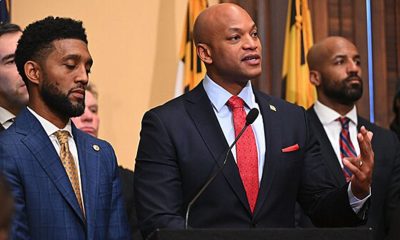Activism
Oakland Students Reflect on Their Journey Voting for the First Time in Local Elections
In 2020, the measure that allowed youth voting, Measure QQ, passed with 68% of the vote but was delayed for four years at the county level while the Alameda Registrar of Voters figured out a plan to implement the right voting software that recognized teen voters. Students wanted a voice in district decisions that directly impacted them, such as school closures, which was what prompted the fight for teen voting.
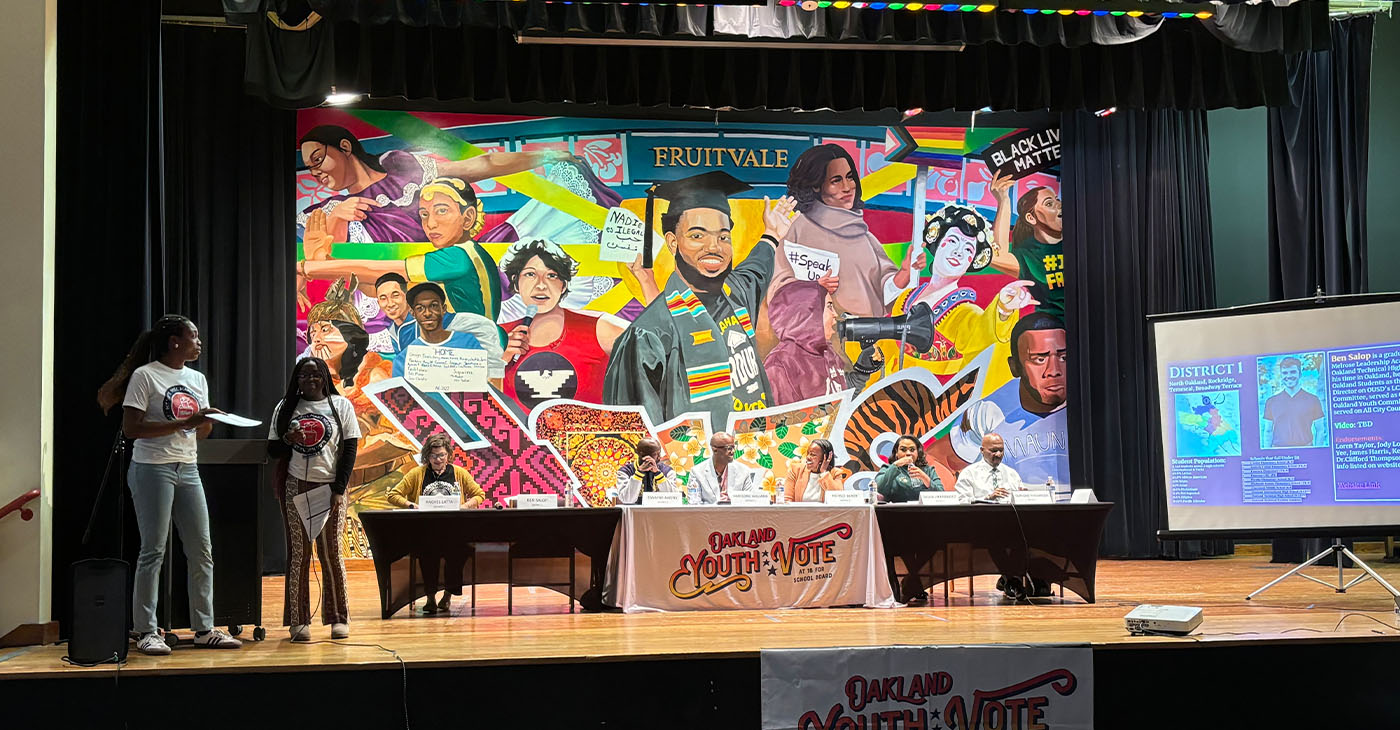
By Magaly Muñoz
In less than a week, Oakland students will have crossed the final step in their five-year journey to vote in local school board elections. The energy that the teens have had over the last year has been “nothing short of exciting,” many have said.
In 2020, the measure that allowed youth voting, Measure QQ, passed with 68% of the vote but was delayed for four years at the county level while the Alameda Registrar of Voters figured out a plan to implement the right voting software that recognized teen voters.
Students wanted a voice in district decisions that directly impacted them, such as school closures, which was what prompted the fight for teen voting.
Other problems that students raised concerns with involved bathroom cleanliness, lack of student resources, and public safety at their schools.
Ojugo, a student at Oakland High School, said her biggest issue was teacher retention. She explained that it’s become normal for teachers to leave partway through the school year, and students are left with a sub, forcing them to learn on their own through online classes.
“We’ve already experienced the online learning style. I think most of us can agree that is not the way to go. And I feel like it degrades your learning ability,” Ojugo said.
She said that the process has been an exciting one but also nerve-wracking. She fears that there won’t be a big turnout or that this new voting ability will somehow be swiped out from under students. Regardless, she is happy to have been a part of the journey.
Chiagozim, also an Oakland High student, said the journey has been stressful, but fun at the same time. She joined the Oakland Youth Vote group this year but has seen bits and pieces of the campaigning for teen voting for the last few years.
The most challenging part of this political process has been getting eligible students to engage with wanting to vote, she said. Freshmen and sophomores have been more inclined to want to learn about school board voting, but juniors and seniors have seemed to brush off the subject.
The new voting charter only allows 16- and 17-year-olds to participate in the school board elections, which means that current underclassmen will likely be unable to vote for a district director for another two years until 2026.
Overall, Chiagozim shared that students have been thrilled to finally have a voice and show the school board that their voice matters.
“I hope [this journey] tells them that we are educated, we know what we want, and we know what we want to do, because if we were able to persevere for the past five years and it’s been finally implemented now, that shows something from us,” Chiagozim said.
Nidya Baez, principal at Fremont High School, has been organizing for youth voting since 2019 and is impressed with the way students have carried on this fight for years, even after they graduate and move on to new things.
People don’t always agree on every issue, Baez said, but they can agree on the need for civic engagement. She added the students involved in the teen voting coalition have continued to keep an open mind about other students of different backgrounds and views.
As they reach the end of the road for this part of their fight, Baez thinks this new process will hold board directors responsible. She explained that students are not afforded the same rights as adults, and because of that, adults make decisions without them or their interests in mind.
“I think this will show that young people want to be involved and are the experts in their experience,” Baez said. “Nothing about us, without us.”

Oakland Youth Vote signage encouraging students to register to vote in the local school board director races. Photo by Magaly Muñoz.
Activism
Oakland Post: Week of November 26 – December 2, 2025
The printed Weekly Edition of the Oakland Post: Week of November 26 – December 2, 2025
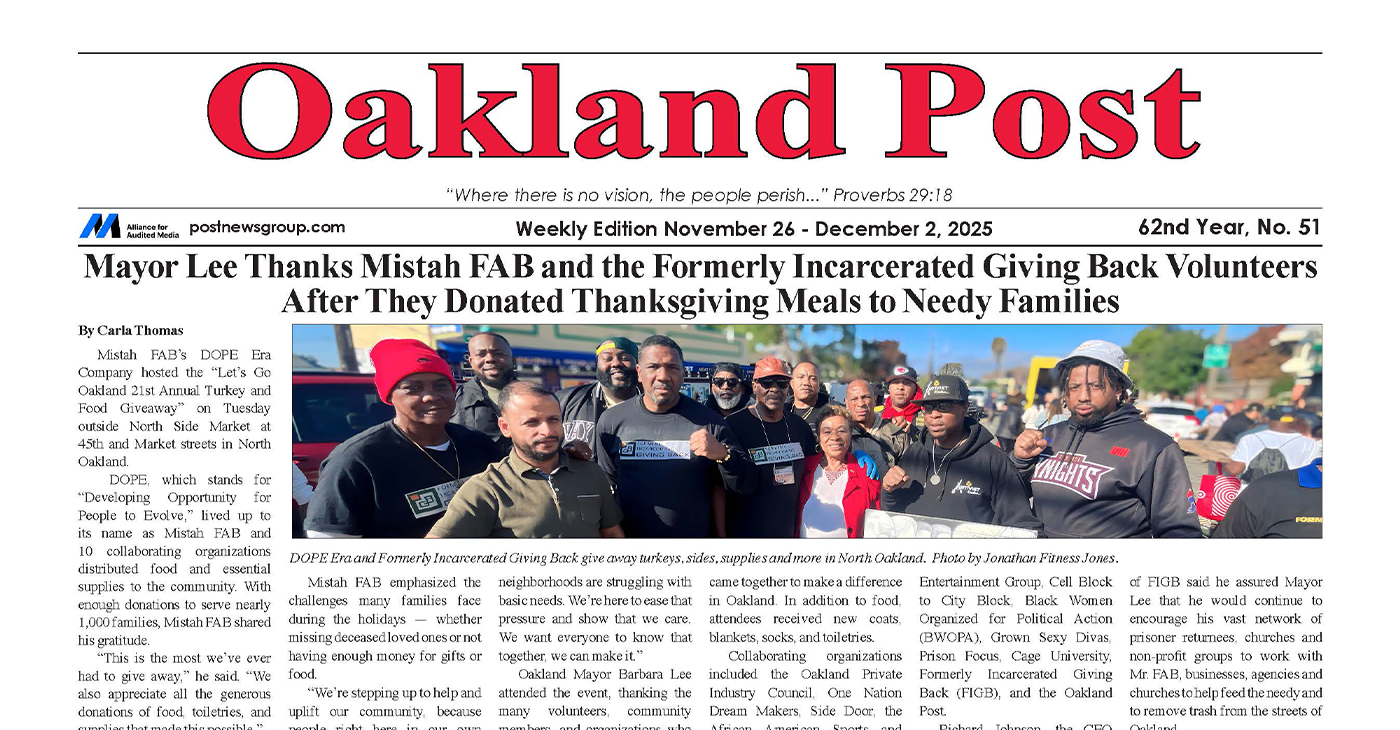
To enlarge your view of this issue, use the slider, magnifying glass icon or full page icon in the lower right corner of the browser window.
Activism
Oakland Post: Week of November 19 – 25, 2025
The printed Weekly Edition of the Oakland Post: Week of November 19 – 25, 2025
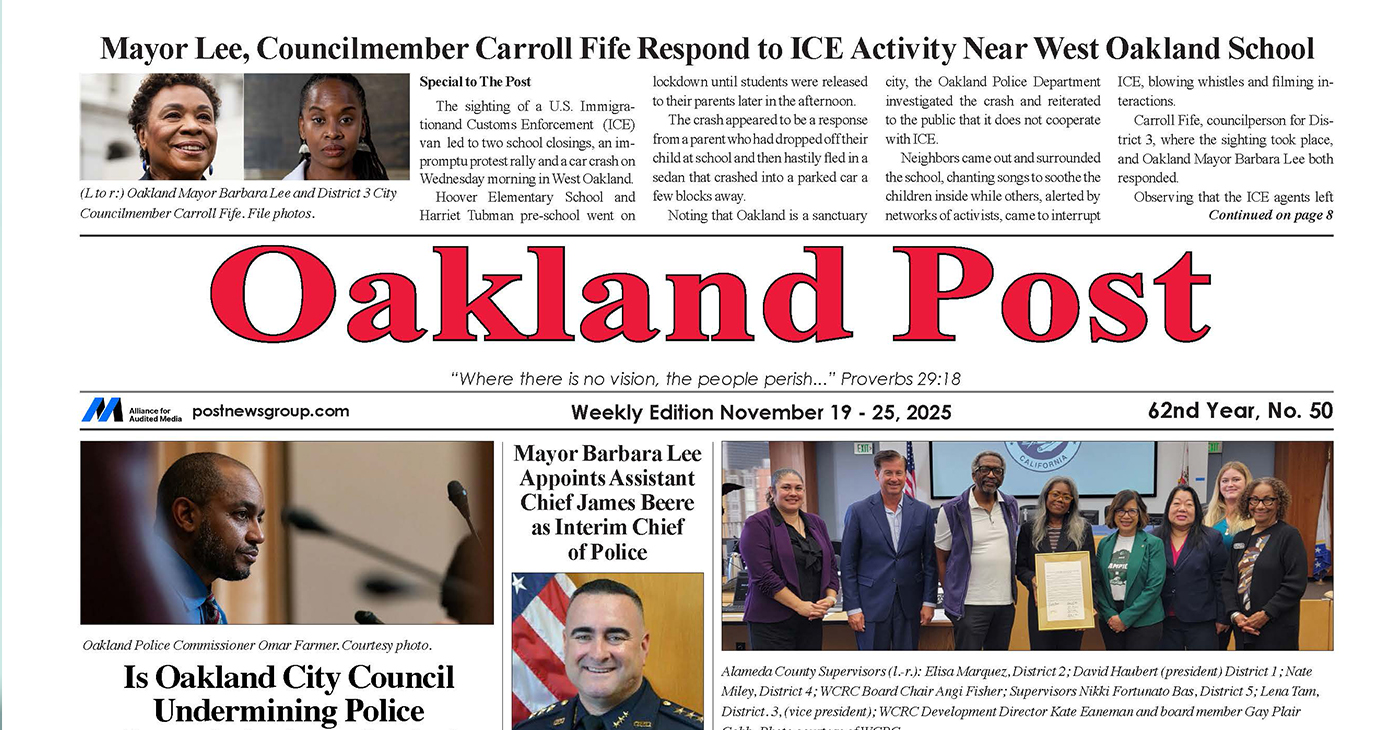
To enlarge your view of this issue, use the slider, magnifying glass icon or full page icon in the lower right corner of the browser window.
Activism
IN MEMORIAM: William ‘Bill’ Patterson, 94
Bill devoted his life to public service and education. In 1971, he became the founding director for the Peralta Community College Foundation, he also became an administrator for Oakland Parks and Recreation overseeing 23 recreation centers, the Oakland Zoo, Children’s Fairyland, Lake Merritt, and the Henry J. Kaiser Convention Center.
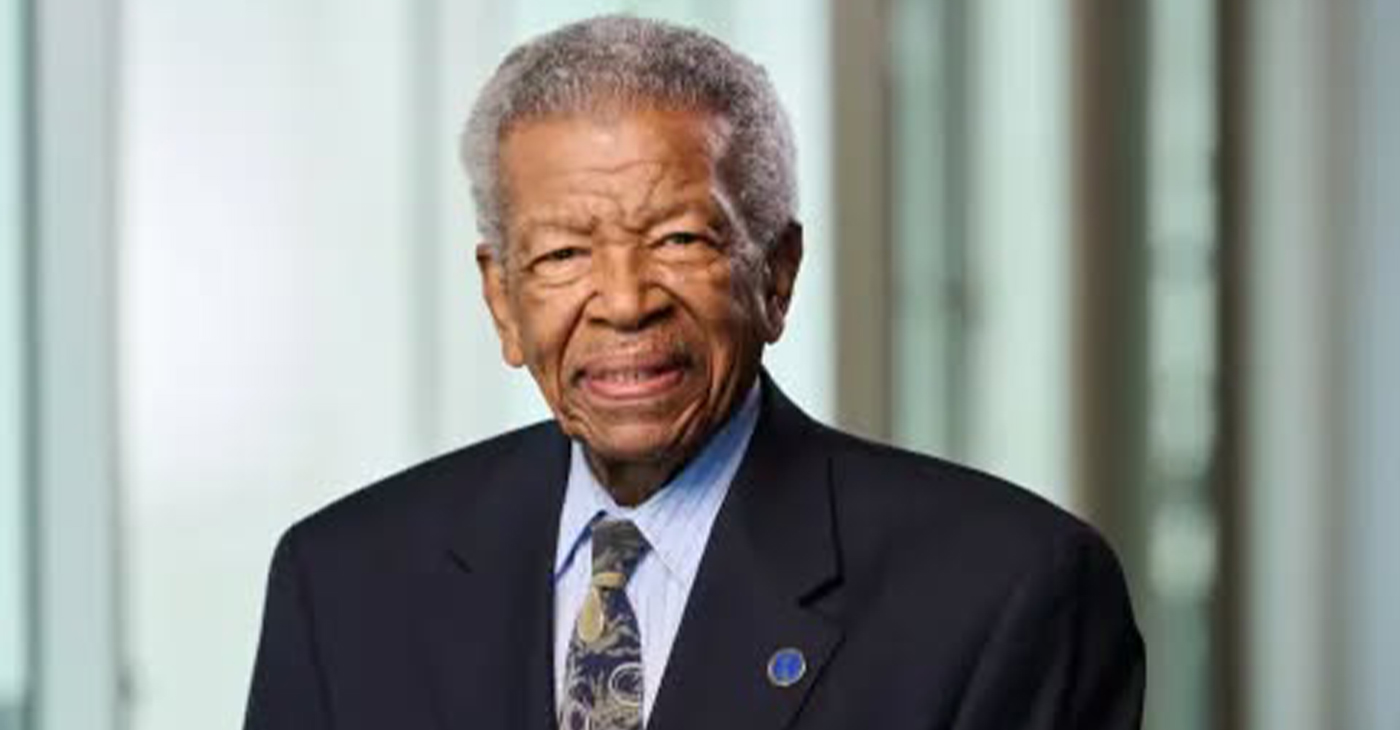
William “Bill” Patterson, 94, of Little Rock, Arkansas, passed away peacefully on October 21, 2025, at his home in Oakland, CA. He was born on May 19, 1931, to Marie Childress Patterson and William Benjamin Patterson in Little Rock, Arkansas. He graduated from Dunbar High School and traveled to Oakland, California, in 1948. William Patterson graduated from San Francisco State University, earning both graduate and undergraduate degrees. He married Euradell “Dell” Patterson in 1961. Bill lovingly took care of his wife, Dell, until she died in 2020.
Bill devoted his life to public service and education. In 1971, he became the founding director for the Peralta Community College Foundation, he also became an administrator for Oakland Parks and Recreation overseeing 23 recreation centers, the Oakland Zoo, Children’s Fairyland, Lake Merritt, and the Henry J. Kaiser Convention Center.
He served on the boards of Oakland’s Urban Strategies Council, the Oakland Public Ethics Commission, and the Oakland Workforce Development Board.
He was a three-term president of the Oakland branch of the NAACP.
Bill was initiated in the Gamma Alpha chapter of Kappa Alpha Psi Fraternity.
In 1997 Bill was appointed to the East Bay Utility District Board of Directors. William Patterson was the first African American Board President and served the board for 27 years.
Bill’s impact reached far beyond his various important and impactful positions.
Bill mentored politicians, athletes and young people. Among those he mentored and advised are legends Joe Morgan, Bill Russell, Frank Robinson, Curt Flood, and Lionel Wilson to name a few.
He is survived by his son, William David Patterson, and one sister, Sarah Ann Strickland, and a host of other family members and friends.
A celebration of life service will take place at Henry J. Kaiser Convention Center (Calvin Simmons Theater) on November 21, 2025, at 10 AM.
His services are being livestreamed at: https://www.facebook.com/events/1250167107131991/
In lieu of flowers, donations can be made to the Euradell and William Patterson scholarship fund TBA.
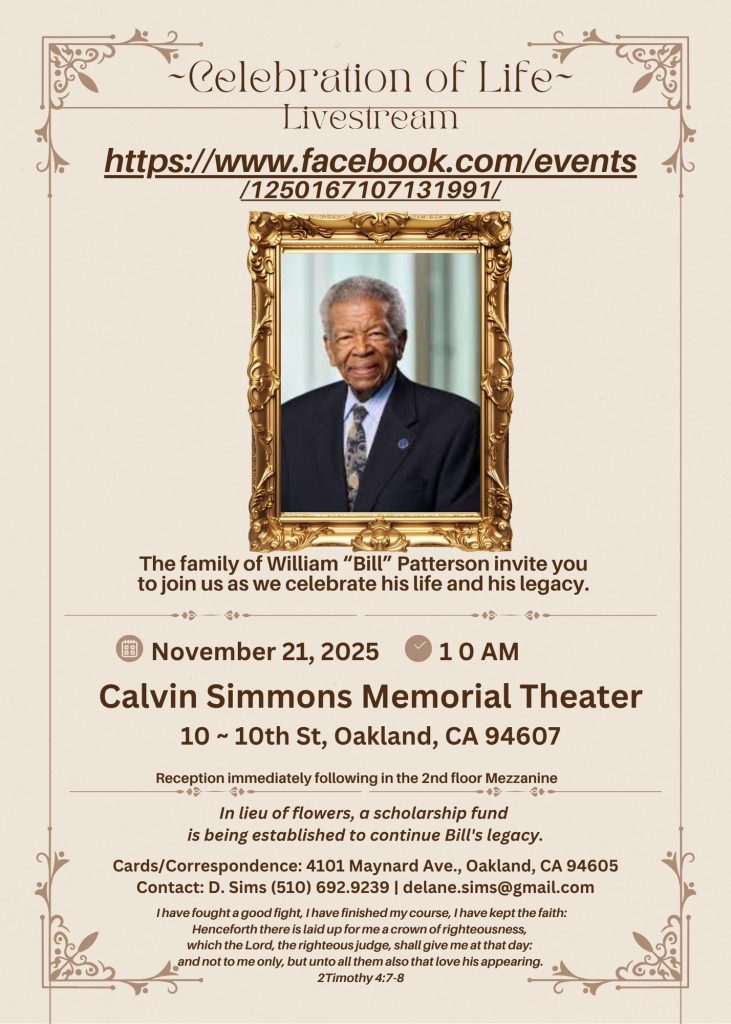
-

 Activism3 weeks ago
Activism3 weeks agoOakland Post: Week of November 12 – 18, 2025
-

 Activism4 weeks ago
Activism4 weeks agoOakland Post: Week of November 5 – 11, 2025
-

 Activism2 weeks ago
Activism2 weeks agoIN MEMORIAM: William ‘Bill’ Patterson, 94
-

 Activism3 weeks ago
Activism3 weeks agoHow Charles R. Drew University Navigated More Than $20 Million in Fed Cuts – Still Prioritizing Students and Community Health
-

 #NNPA BlackPress3 weeks ago
#NNPA BlackPress3 weeks agoThe Perfumed Hand of Hypocrisy: Trump Hosted Former Terror Suspect While America Condemns a Muslim Mayor
-

 #NNPA BlackPress3 weeks ago
#NNPA BlackPress3 weeks agoProtecting Pedophiles: The GOP’s Warped Crusade Against Its Own Lies
-

 Bay Area3 weeks ago
Bay Area3 weeks agoNo Justice in the Justice System
-

 #NNPA BlackPress4 weeks ago
#NNPA BlackPress4 weeks ago2026 Subaru Forester Wilderness Review: Everyday SUV With Extra Confidence








